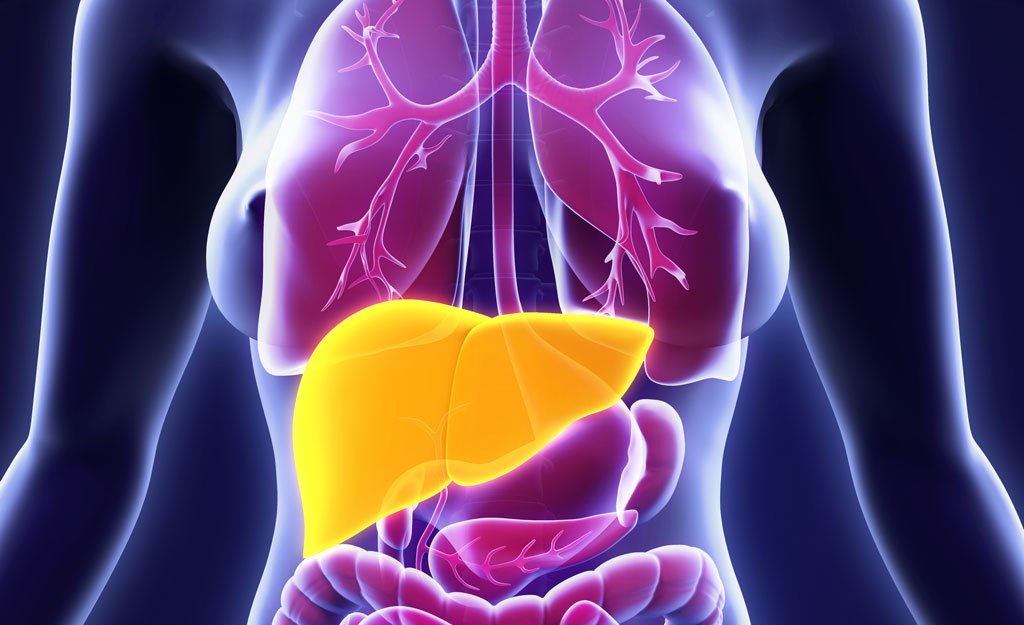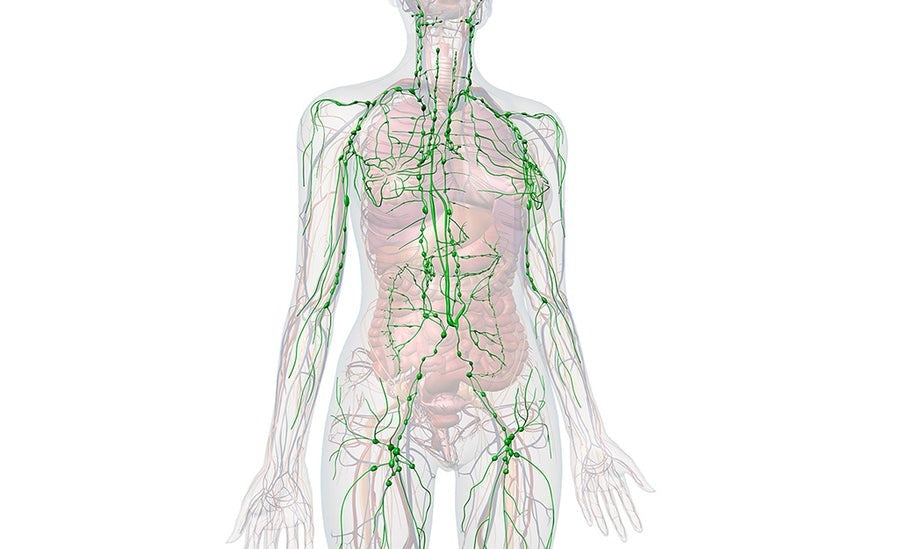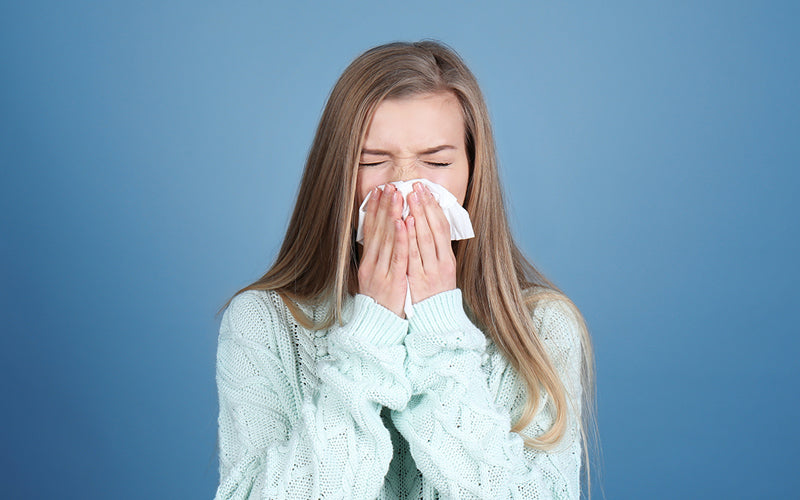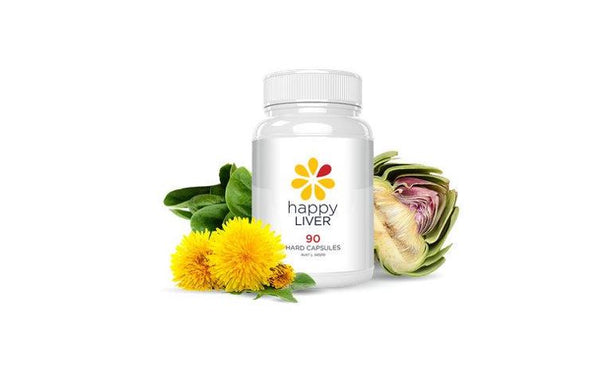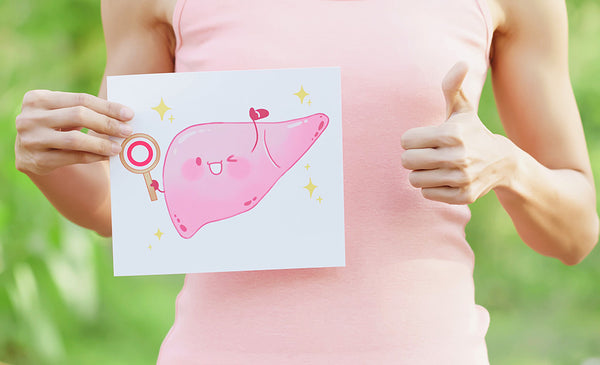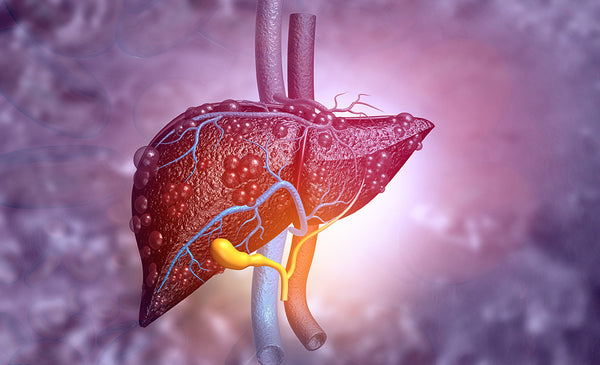Liver Health and How It Impacts Your Hormones
Let’s face it, we live in a toxic world and are exposed to a whole plethora of toxins on a daily basis. These toxins need to be broken down by our systems and safely excreted. Otherwise, they will have a negative impact on your health and be stored in the cells to prevent further damage.
Liver Health & Environmental Toxins
Common toxins we're exposed to on a daily basis come from many sources. Environmental pollution - if you live in cities or developed areas; pesticides and agricultural chemicals - if you live in the countryside; or if you consume non-organic food items; use cleaning chemicals; cosmetics & hair colouring solutions; perfumes, deodorants, soaps & shampoos; food additives and by-products from food processing & cooking; heavy metals; volatile organic compounds (VOC’s) from carpets, paints and plastics - even your new car smell; cooking utensils; medicines; recreational drugs; sunscreens and even your own metabolic wastes!
Once a toxin enters your system, it needs to be metabolised. Initially, once absorbed into the blood circulation, your antioxidant defences will attempt to neutralise the toxins, and then they will enter the liver where several mechanisms are in place to deal with toxins. Then your kidneys, lymph and bowels will attempt to excrete the remaining metabolised chemicals. This requires your liver, lymph, kidneys, skin and digestive system to work optimally - which is often not the case.
Certain toxins, such as heavy metals and pesticides, are difficult for the body to metabolise, so they're stored in fatty tissues to protect them from causing further damage to your system. Over time these toxins degrade the fatty tissues in the nervous system and brain, leading to a range of neurological conditions.
Apart from accumulating in fatty tissues, toxins also trigger elevated levels of inflammation, block endocrine hormone receptor sites, increase immune reactions, which increases autoimmune and allergic reactions, aggravate nervous tissues leading to irritability and poor sleep patterns.

So essentially toxins can impact every body function. Your particular genetic weaknesses tend to be the first area to be affected. If you're prone to allergies, then these may be the first symptoms. If you are prone to arthritis, this may be flare up. If you're prone to hormonal imbalances, then this may be triggered. But toxins can literally influence each and every condition in the body.
This is why a well-constructed, safe, cleansing program is beneficial for all health conditions.
The role of the liver and its influence on hormonal health cannot be overstated. Some of its functional roles are:
- Hepatic involvement – conversion of oestradiol and oestrone to oestriol
- Conversion of oestrogens to form glucuronides and sulfates via excretion (sulphation pathways)
- Detoxification of xenoestrogens, drugs, chemicals and poisons
- Homocysteine metabolism
- Production of bile
- Break down, excretion and recycling of hormones
Homocysteine is an intermediary toxic substance, produced during the metabolism of sulphur proteins. Homocysteine levels are largely determined by your nutritional status and lifestyle choices.
Lifestyle choices that increase homocysteine levels are consumption of coffee, alcohol and smoking. Nutritionally low levels of folic acid, Vitamin B12 and Vitamin B6 raise homocysteine levels significantly since the low vitamin levels prevent effective homocysteine metabolism.
High levels of homocysteine are implicated in heart disease, rheumatoid arthritis, high cholesterol, atherosclerosis, chronic fatigue, fibromyalgia, kidney stones, hearing loss, dementia, Alzheimer's disease, depression, memory loss, Parkinson's disease, miscarriages, spina bifida, psoriasis and other autoimmune diseases.
High levels of homocysteine occur with low levels of cysteine which is vital to produce glutathione (a liver antioxidant), taurine (bile acids & cholesterol metabolism).
Hormonal conditions
Specifically for hormonal conditions, you need to consider how toxins affect hormone receptor sites - which can then create false signals to the endocrine system, irritation to nervous tissues, and affects the liver’s ability to metabolise hormones. This is critical. If you cannot metabolise hormones, then everything goes wrong from there. It's very common in women who have severe hormonal issues, that they are genetically susceptible to incomplete hormone metabolism.
Toxins from all sources and of all types will accumulate in your system. It’s a fact of nature in the world we live in, and you cannot avoid it completely. How your body reacts to these toxins is crucial. Some people will live their entire life with elevated heavy metal levels and never have an issue. Others will have minor exposure and react badly. It’s just the luck of the draw.
Generally, people who have chronic illnesses, which are unresponsive to treatment, have a reduced ability to genetically metabolise toxins. They need a clean diet and a healthy lifestyle to lead a healthy, symptom-free life. Now, with the latest fad of detoxification, many people can make themselves worse through a poorly prepared and planned detoxification.
Toxins can be concentrated in the body, and when you overstimulate this process, your body can dump the toxins into your system - causing more damage. If your digestion and elimination organs are not functioning optimally, then you can actually make your health worse. So here are some steps to safely detoxify your system...
Support for better liver detoxification
-
Liver support - the liver requires specific nutrients to ensure optimal metabolism of the hormones. If the liver is sluggish due to poor diet, alcohol, or excess oestrogen, then it becomes harder for the liver to fulfil its role of detoxification. This is where a good liver supplement like Happy Liver can support and optimise the cleansing process since it contains essential nutrients to support liver function. Also include more cruciferous vegetables (broccoli, cauliflower, cabbage, kale, Brussel sprouts) help to increase the liver pathways to better metabolise hormones. Including green juice in your daily diet is an effective way to support the body.
-
Alkalise - to minimise the detox symptoms, it's important to keep your system in an alkaline state. Green superfood powders are a good way to do this. We recommend Happy Greens for this.
- Antioxidants - apart from a diet high in antioxidant foods, it helps to flood your system with additional plant-based antioxidants. We suggest the Happy Turmeric for this.
- Fibre - to maintain regular bowel function then you need to load your system with lots of fibre. This may occur naturally with the change in diet; but if it doesn't, then try soaked chia and basil seeds, psyllium husks or the Klenz powder. Fibre is important to bind to and clear any toxins released.
As toxins begin to come out of your system, often your symptoms will exacerbate - since they're the cause of your symptoms in the first place. You may also notice slight nausea occasionally, and headaches are common. Generally, you will sleep very well and soundly. Low energy levels are common during this time, so make sure you can rest.
This is why a well-constructed, safe, cleansing program is beneficial for all health conditions.
Emotionally, you may go through a rollercoaster ride. The deprivation of your favourite foods is one factor. The withdrawal of processed foods has another impact, and your body also releases stored emotions as well.
Once you pass through this phase, you will feel like a burden has been lifted from your shoulders. Energy levels will rise, and your motivation levels will be at an all-time high. Enjoy the process, and feel the benefits of releasing many of these stored toxins.
We find it beneficial to follow a detoxification process at least once to twice a year.
Environmental Chemicals
The world around us has concentrated chemicals in the atmosphere. We breathe them, they soak into our skin and we eat them. Chemicals which are unnatural to the body create chaos within and cause a multitude of conditions and illnesses. Post-industrialisation sees the world filled with harmful chemicals and pollutants, which are often contained in skin products, plastics, foods, pesticides and water.
Any discussion of oestrogen should also include the environmental substances which have oestrogenic effects on the body. These include the phytoestrogens found in plants which have some therapeutic effects, and also the less desirable environmental oestrogens. What do these substances do:
- They scramble the critical hormonal messages of the endocrine system
- They are environmental oestrogens or oestrogen mimics
We need to realise that all animals with backbones (fish, frogs, reptiles, birds and mammals) have very similar endocrine glands and hormones. Yet the effects of environmental chemicals in animals have been drastic – infertility, birth defects, failing immune systems, leading to increased infections and cancers.
With humans, the effects are more subtle and may have delayed impacts. However, hormone disruptions are increasing. They do not act like typical carcinogens or direct poisons, therefore they defy the current testing protocols, that assume the higher the direct dose, the more damage. We're looking in the wrong places; asking the wrong questions. We are not looking for the more subtle hormone disruptions.
Classes of hormone disruptors (oestrogen dominance is a major effect of these):
-
Environmental chemicals are the 'thugs' on the biochemical highway (of life) that sabotage vital communications. They mug the messengers or impersonate them. They jam signals, they scramble messages. They sow disinformation. They wreak all manner of havoc.
-
Hormonal mimics can copy a natural hormone, which allows them to fit into a variety of receptors and send messages. Examples of these are Diethylstilbesterol (DES), DDT and DDE. DDE can deplete natural steroid hormones (particularly testosterone).
-
Hormone blockers can occupy the receptor site in the cell and block the natural hormone. An example of this is fungicides. Vinclozolin blocks testosterone and has a feminising effect on males. This fungicide is frequently used to kill fungus on fruit & vegetables.
-
Hormone triggers include chemicals that attach to receptors and trigger an abnormal response or action in the cell. An example of this would be dioxins, which alter metabolism.
- A depressed immune response, where the body is unable to fight off viruses, increases the risk of tumours. Natural killer cells below normal and T cell activity is limited. An example of this is PCB's and DDT.
-
Hormone scramblers can disrupt critical hormone messages. An example of this is electromagnetic radiation (EMR) from mobile phones. EMR affects the hypothalamus, disrupts the whole endocrine system of the body, and lowers melatonin levels (oestrogen balancer). They do this by scrambling the critical hormone messages of the endocrine system. Electromagnetic fog is created by televisions, mobile phones and transmitters, computers, power lines and satellite transmitters.
- Hormone disruptors are long-lasting and accumulate in fatty tissues. Increased accumulation occurs with repeated exposure.
Environmental Mimics
With millions of hormone receptors in the body, the level of environmental hormone mimics from petrochemicals, pesticides, plastics and cleaning products affect endocrine function. These chemicals bind to hormone receptor sites, effectively creating overstimulation of these receptors. This activates one of the hormones functions, resulting in weight gain. Women are extremely sensitive to this level of environmental toxicity.
The early development of young women in today's society is also a sign that our children are being exposed to sex hormones, not only during conception but during their development as well.
Reduced Capacity to Metabolise and Excrete Hormones
Hormones are not easily broken down in the body, and they go through several processes in the liver via methylation and conjugation to be broken down.
Women with chronic hormonal imbalances often have a genetic predisposition to poor methylation and conjugation of hormones. Women exposed to high sugar levels is another increasingly common cause of liver disease. When the liver doesn't metabolise our own internal hormones, as well as synthetic hormones as mentioned previously, then these hormones recirculate, causing a ‘double whammy’.
To make matters worse, if, in conjunction with poor metabolism, the bowels are not working regularly, hormones are further reabsorbed into the blood circulation, creating a ‘triple whammy’.
This can happen due to a poor internal bacterial balance, or through constipation because of a low-fibre diet from over-processed food.
Healthy bacteria play an important role in the breakdown of hormones in the bowel, as well as in the production of certain feel-good hormones, such as serotonin. If serotonin levels drop then depression and emotional eating can develop.
Summary
I hope this article summarises some of the complexities involved in the role of the liver in our health, and the role of hormones in the liver. And how a number of different internal feedback mechanisms are affected by environmental toxins and environmental hormones.
